Here at Buffer, we believe that what gets measured, gets managed. That’s important because with effective management and oversight, we have the tools and knowledge to effectively make change happen.
But how do you measure an emotion?
Certainly, you may notice the signs of an emotion like happiness trending up or down. When it’s trending downward, you’ll notice that productivity wanes, morale decreases, and people leave for other jobs. And when it’s trending upward, the business hums, there’s joy at work, and the mood is jovial.
However, some emotions aren’t so telltale, and if left unmeasured, can have a major impact on your team culture. Is there an objective way to measure how happy and satisfied your team is?
We say yes! We’ve landed on a few ways to measure team happiness at Buffer, and we’re happy to share our tools and processes with you. After all, team happiness is the North Star of metrics for our People team, and for us, it all starts with measurement.
Here’s how we do it:
Tracking Employee Happiness by Consulting the Experts
To make our company better, we turn to the true experts: our teammates! By asking and listening to their thoughts, and tracking their feelings (whether good, bad, or neutral), we are able to gauge the areas we need to improve the most. At the end of the day, employee satisfaction is the true measurement of improvement, and if we are keeping employees happy and satisfied, we’re on the right track.
We keep our ear to the ground in a variety of ways to track employee satisfaction — through regular surveys that give us hard data, and then going beyond the numbers, through informal chats and special exercises.
Here’s a bit on the tools and methods we use and how you might apply it to your company.
Happiness Tracker #1: Employee Net Promoter Scores (eNPS)
We began tracking team happiness for our employees using the Employee Net Promoter Score (eNPS) several years ago, and it has been a consistent metric we have used to see how things feel overall.
The eNPS is drawn from a scale of 1-10 with the question, “How likely are you to recommend Buffer as a place to work?”

The scores are broken into promoters, passives, and detractors.
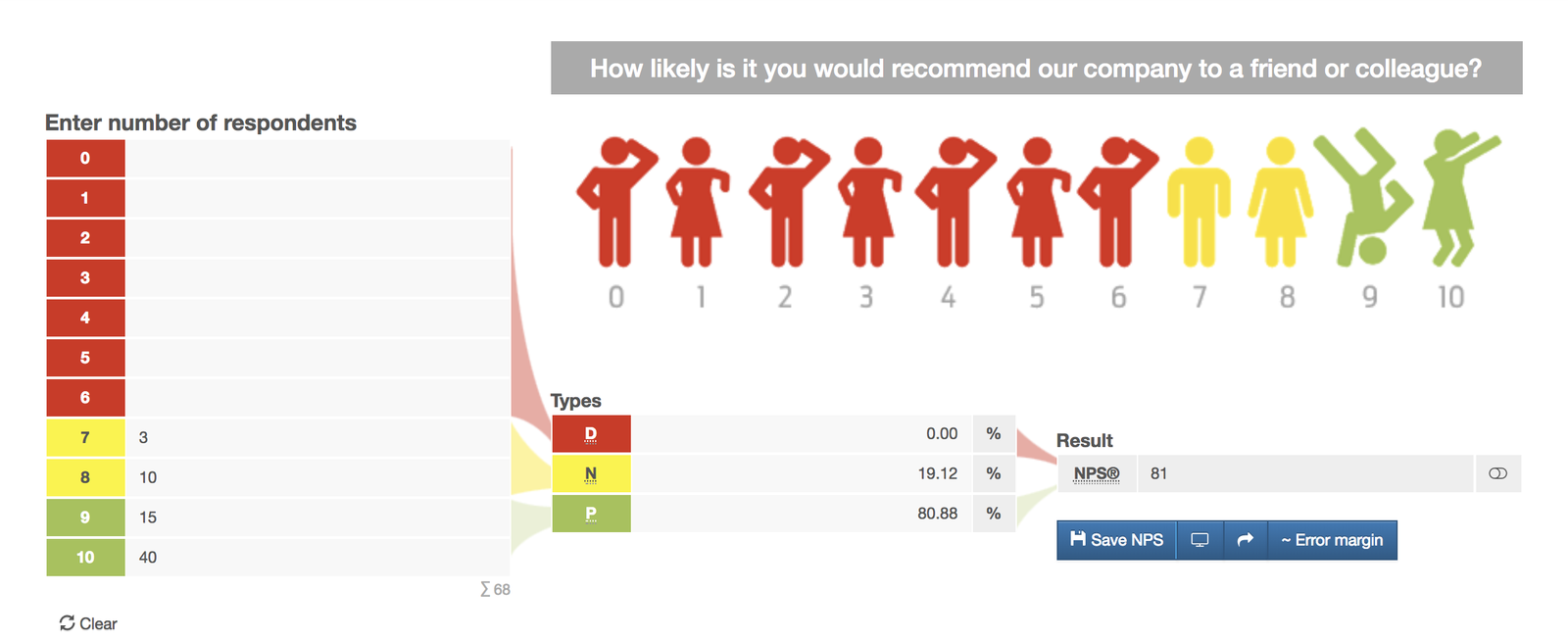
Over time, here’s how our overall score has fluctuated:
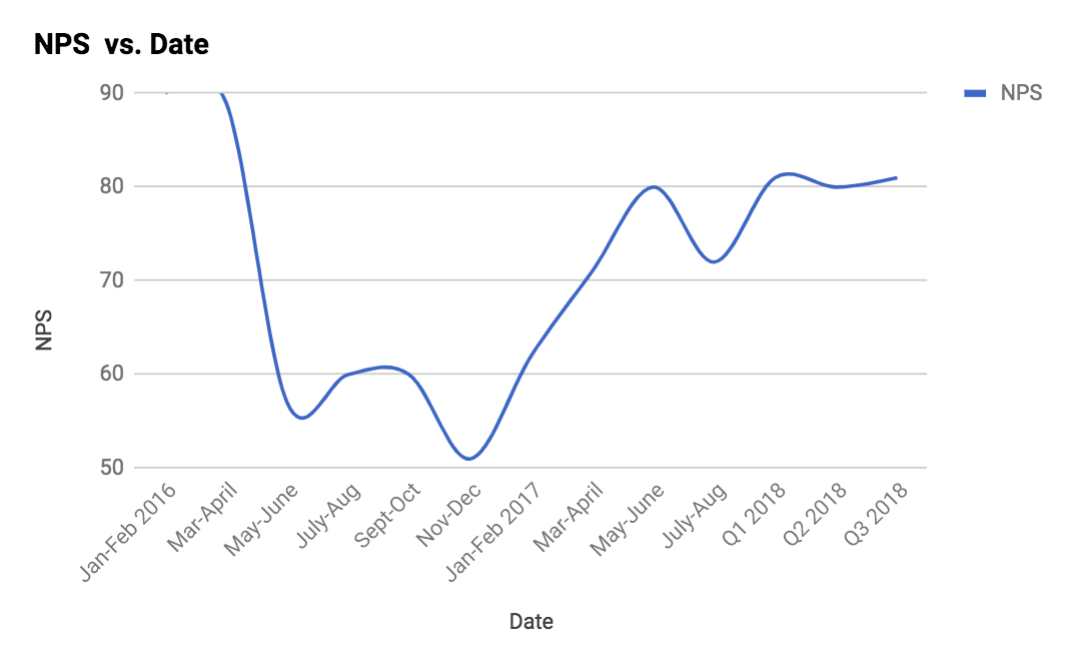
This score is an easy way to measure how employee happiness trends over time.
Happiness Tracker #2: Surveys
In addition to the eNPS scores, we routinely collect the demographic data to accompany our results, including:
- Team/Area
- Tenure at Buffer
- Location
We shape any additional questions based on the signals that our managers and executives are hearing.
Are we hearing people are overworked and maybe needing time off? Maybe we’ll follow up and ask:
- How many hours do you work in an average day?
- How much focus time do you generally need to have a great day?
- How do you know when you’ve worked a full day?
- When was the last time you felt stressed at work and what triggered that feeling?
We asked our team about benefits and compensation as a precursor to a team gathering for our People and Finance team to chat about planning for 2019. Some of the questions included:
- Do you feel your compensation (base salary+benefits+equity) is fair, relative to other roles at Buffer and those at similar companies?
- Which benefits have you used in the past quarter?
- How do you feel our health plan or health reimbursement options measure up?
- Which general area of benefits could Buffer be more supportive in?
- Is there a specific benefit or perk you’ve seen at another company that you’d like to see at Buffer?
To get these surveys out to our team, we use a variety of different online programs:
1. Google Forms
Google Forms offers a wonderful array of features and ways to ask and collect data.
2. OfficeVibe
For ongoing, weekly data, we have used OfficeVibe and their Slackbot integration, which drops a friendly, quick 4-5 question survey to each employee each week.
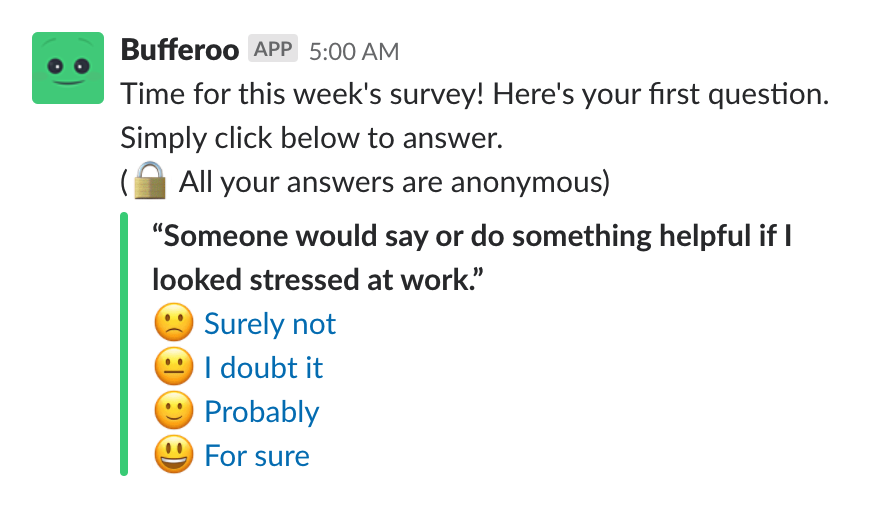
3. Culture Amp 360s + Pulse Surveys
Culture Amp’s 360- and 180-reviews are great for people to give peer-to-peer and peer-to-management feedback.
But when it comes to tracking employee happiness, we now use Culture Amp’s Engagement platform, which offers an array of short and long surveys to keep a “pulse” on team happiness.
Here’s what one of our survey looks like:
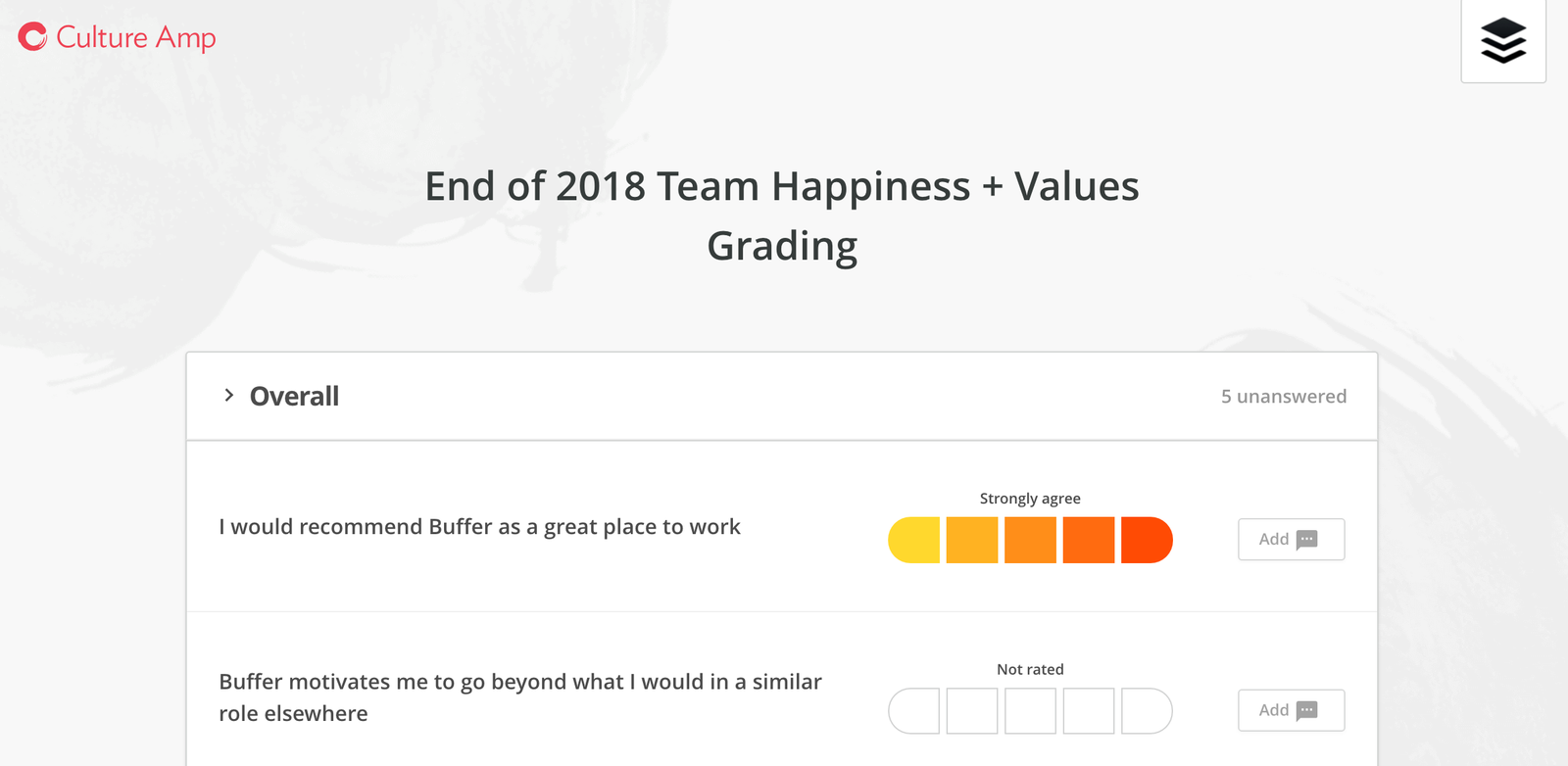
Once a year, we make sure to include this section, which surveys teammates on if they think we’re truly living up to our core values:
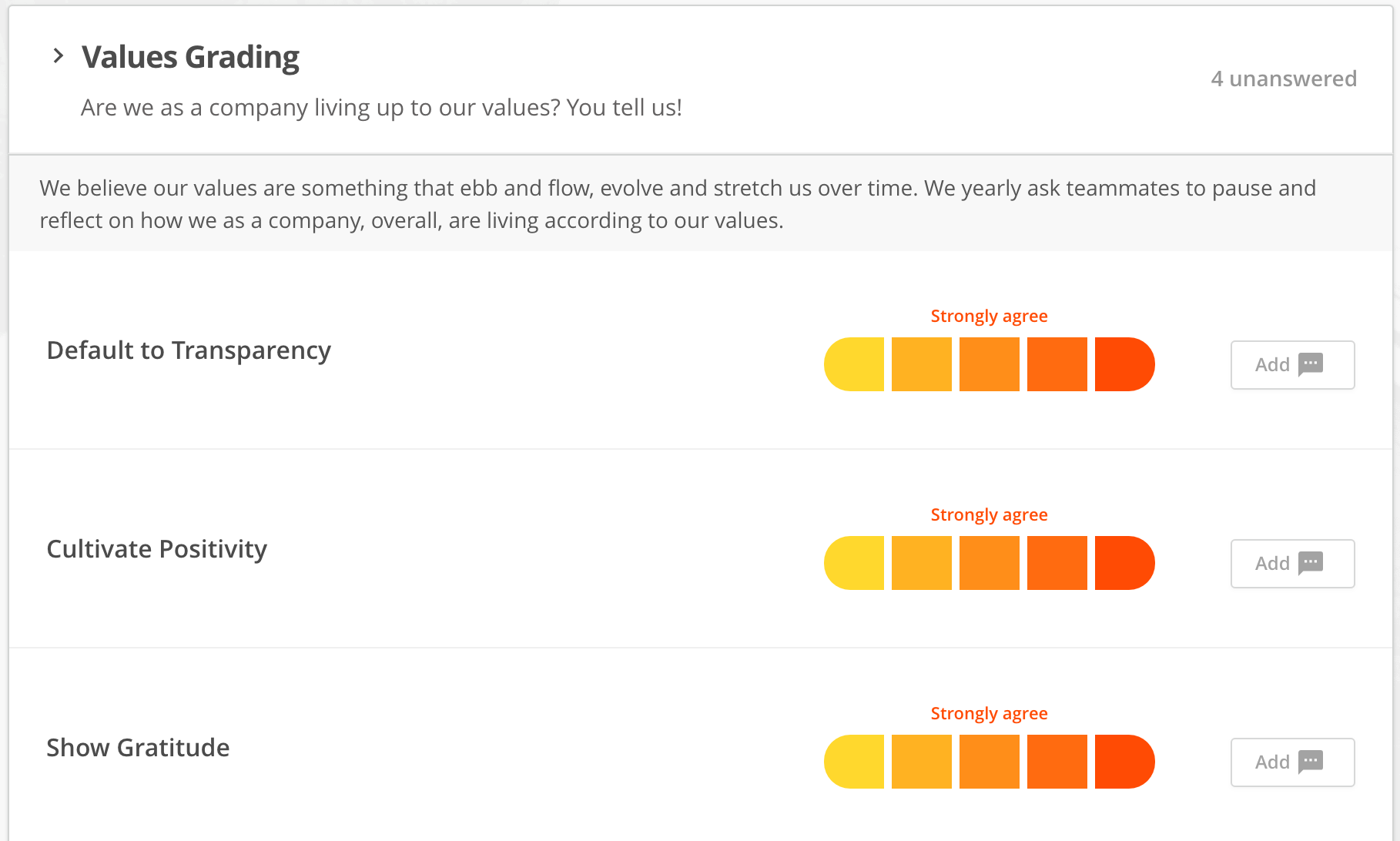
Here’s a look at how we scored previously when we graded ourselves.
4. Discourse
We use Discourse as our platform for announcements and use this to transparently share summaries and the key findings of each eNPS survey.
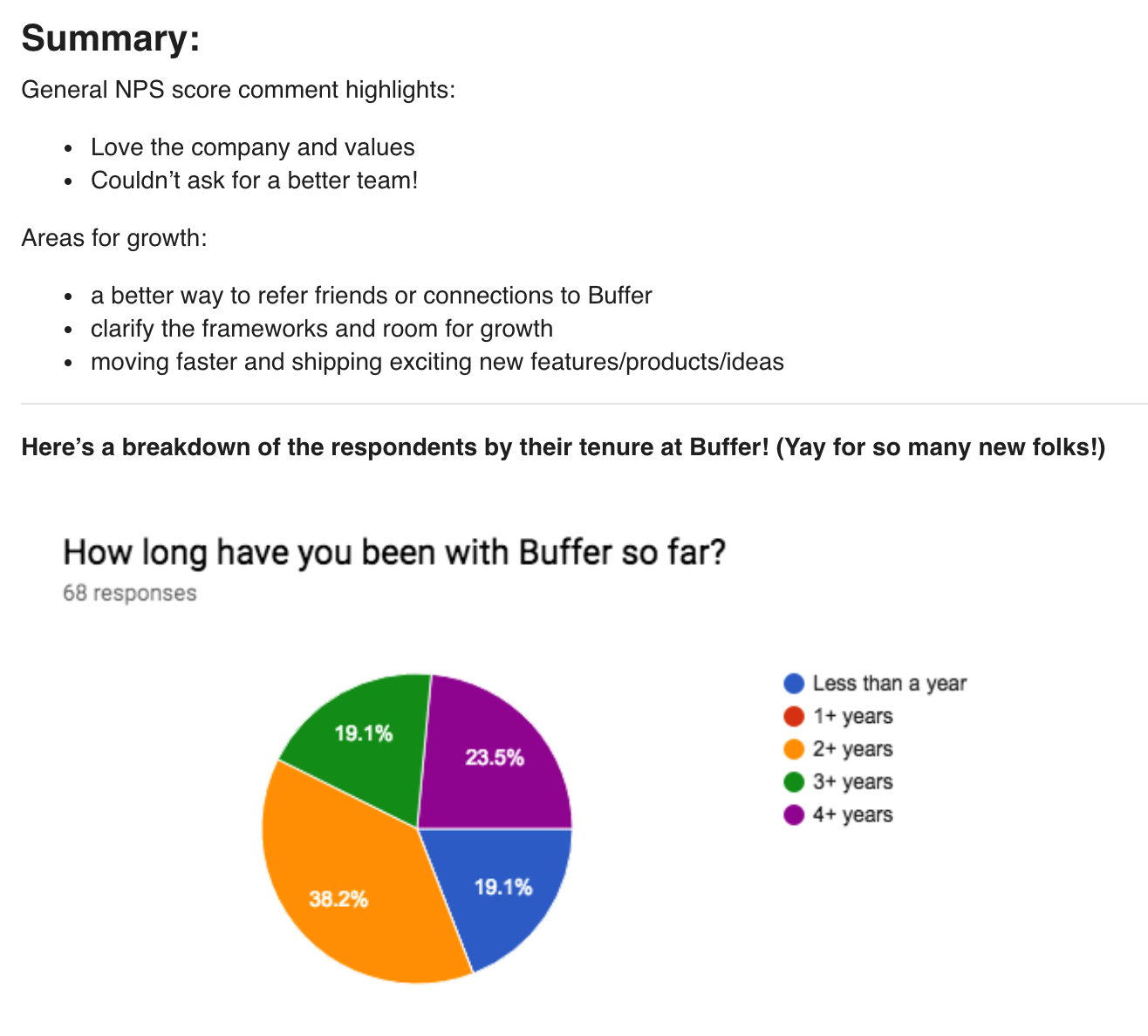
Happiness Tracker #3: Informal Chats
While team-wide or area-wide surveys are invaluable in the scope and speed at gathering information, some of our deepest insights have come from face-to-face discussions.
We love the data and consistency of our eNPS number, but also place a high premium on approaching our teammates one at a time.
At times, this looks like a casual, informal chat where we preface by saying that all details are confidential and only high-level signals will be relayed back to the People team, and then to managers as needed.
Happiness Tracker #4: Listening Tours
If we feel like we might need specific opinions on a larger matter, we’ll conduct what we call “listening tours,” where we take a customer-research approach, selecting a representative sample from the team and scheduling at least 45 minutes to fully dive into questions.
The guidelines we use to help frame up these face-to-face conversations are:
- Invite the teammate to speak but do not put pressure on them to do so. Give them a really easy out and don’t follow up if they simply don’t respond.
- Put in writing and mention upfront that the conversation is confidential and only high-level signals will be passed along. (I would go so far as to say I am keeping any raw notes on my private desktop vs. our shared company Paper account, in case that offers any comfort.)
- Have a list of open-ended questions on hand (and share with the teammates ahead of time so they can think on each of them).
- Allow time for silence and pauses. These can feel really awkward in a video-chat setting, but can be really powerful for each interviewer and interviewee.
- End each conversation with, “Is there anything we haven’t covered, even not related to this?” Sometimes you can get on a roll and one thought will spur another. It’s best to get it all out on the table.
Acting on the Feedback
As Culture Amp says, most employees don’t tire of giving feedback, they tire of surveys when they aren’t seeing action taken on the feedback.
Culture Amp’s Engagement and Effectiveness platforms offer an action plan framework that help keep the teams and company accountable to act.
As a general rule, we share the public summaries of feedback with our team and when we take action or unveil a new initiative that is a direct result (or even a peripheral result!) of feedback, we emphasize that.
Of course, there are times when we can’t easily move forward on certain bits of feedback. And, there are some things that can take months to fully iron out (not to mention the fatigue that can come from continually hearing, or saying, “We’re working on it!”). But even small wins or changes based on team feedback can have a larger ripple effect and help to improve employee happiness.
Here is an example of a change directly spurred by feedback from a survey:
- We heard that folks had a hard time disconnecting when other teammates were online. This was especially the case when many local holidays don’t line up for us as a global company.
- So, we currently have nine days where the company shuts down at the end of the year, in order for everyone to truly disconnect! We’ve also implemented one to two of these days throughout the rest of the year, too, for longer weekends.
Over to You
Do you enjoy completing surveys or offering feedback? Are there ways you feel we could better learn from our team and measure their contentment? Leave a comment below and let us know.
Try Buffer for free
190,000+ creators, small businesses, and marketers use Buffer to grow their audiences every month.




